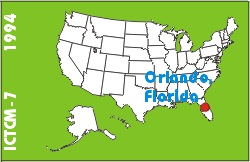
Electronic Proceedings of the Seventh Annual International Conference on Technology in Collegiate MathematicsOrlando, Florida, November 17-20, 1994Paper C021Mathcad Activities on Infinite Series and Taylor Polynomials |
Przemyslaw BogackiDepartment of Mathematics and Statistics Old Dominion University Norfolk, VA 23529 USA Phone: (757) 683-3262 Fax: (757) 683-3885 pbogacki@odu.edu list of all papers by this author |
| Click to access this paper: |
Additional file(s) associated with this paper:
|
ABSTRACT
Traditionally, our Calculus II students find the material on infinite series and Taylor polynomials very challenging. This is largely due to the relatively high level of sophistication of the theory required; for example, students frequently struggle with the 'maze' of convergence tests before they can successfully diagnose convergence or divergence of a series. Actually, it isn't just the theory, but the concepts and ideas themselves that are quite sophisticated here.Activities discussed in this presentation, developed by the author in the Summer 1994, are intended to provide an intuitive interpretation to some of the fundamental notions involved in studying infinite series and Taylor polynomials, in an attempt to lend more credibility (from a student's point of view) to theoretical results.
In the infinite series activity, students visually and numerically explore some examples of series. The relationship (and difference) between the convergence of the term sequence and that of the partial sum sequence is highlighted by having the terms 'stacked-up' in the partial sum sequence. This activity can be repeated whenever a new type of a series is introduced (geometric, alternating, p-series, etc.).
The Taylor polynomial activity was designed to help the instructor achieve two goals:
- introduce the principles underlying the development of Taylor polynomials (with the visual illustration), and
- have students 'discover' the Taylor polynomial formula.
The activities discussed here have been written as Mathcad for Windows sessions. The advantage that Mathcad offers here, is that all the relevant information: formulas, graphs and tables can be arranged in a logical fashion - Mathcad is not constrained by the 'one-dimensional' layout many other packages follow.
At the end of the presentation, the connection between these activities, and related laboratory assignments (developed under our Computer-based Calculus Project) will be outlined.
Keyword(s): calculus, Mathcad, sequences and series
